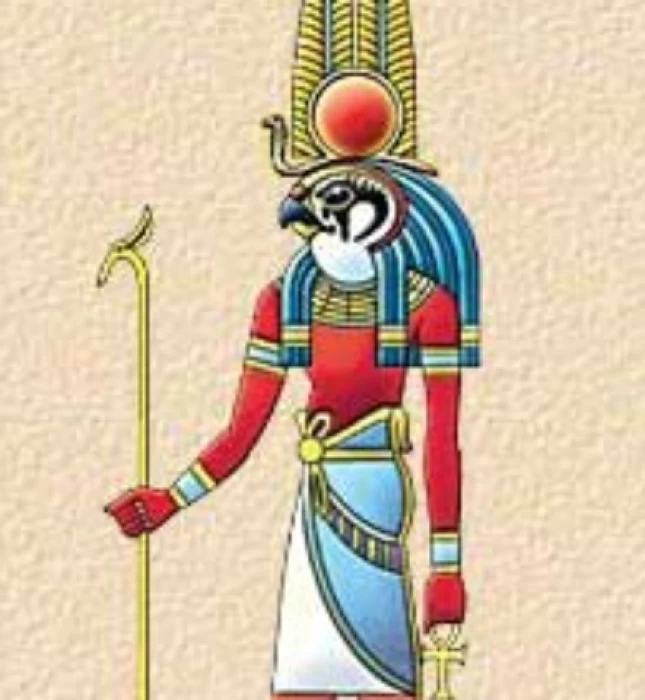
El dios Montu | Moutu dios del antiguo Egipto
El dios Munto, antiguo dios egipcio de la guerra, se representaba en forma de halcón y se escribía en jeroglíficos como Mont o Mentu. El significado del nombre del dios Munto en la antigua lengua egipcia es que se trata de un beduino, ya que en su rostro se le interpretaba como un vagabundo. otra deidad que probablemente se originó en el Alto Egipto, y que más tarde sería conocido como el "Rey de los Dioses". Fue durante este periodo cuando el papel de Montu en la religión egipcia adquirió los verdaderos atributos de un dios de la guerra. se convirtió en un guerrero.
Montu fue una de las manifestaciones que se vieron afectadas por el sol ardiente del dios Ra y es muy probable que se refieran a él con el nombre de Montu Ra. en la dinastía XII, Montu pasó a estar subordinado a Amón Ra.. después de que éste alabara al héroe de la historia por derrotar al hombre fuerte. Existía una relación entre Montu y el dios Buchis, debido a la existencia de un vínculo entre el toro bravo y la guerra, ya que el toro es un símbolo de poder en el pasado.
El arte egipcio antiguo representaba a Munto con forma de hombre, pero venía con cabeza de halcón, y a veces venía en Tiro con cabeza de toro. El dios Munto lleva el disco del sol entre dos pilares, y se dice que son dos plumas, y son una referencia al cielo y al toro, que significan fuerza y guerra.
Facts about the god Montu
Montu was one of the manifestations that were affected by the burning sun of the god Ra and are most likely referred to by the name Montu Ra. If you are interested in discovering mythology about the god Mntu, book our Egypt travel packages to Luxor , by the 12th Dynasty, Montu became subordinated to Amun Ra. after he praised the story hero for defeating the strongman. There was a relationship between Montu and the god Buchis, due to the existence of a link between the raging bull with war, as the bull is a symbol of power in the past. All this historical information will be relevant during your Luxor day tours.
Ancient Egyptian art depicted Monto in the form of a man, but he came with the head of a falcon, and sometimes he came in Tyre with the head of a bull. The god Munto wears the disk of the sun between two pillars, and it is said that they are two feathers, and they are a reference to the sky and the bull, meaning strength and war. If you are an historical person and interested in discovering more and more about Egyptian pharaohs and its mythology, head to Luxor or Aswan day tours.
The god Montu, the ancient Egyptian god of war, was depicted in the form of a falcon and written in hieroglyphs as Mont or Mentu. The god Montu is one of the Egyptian gods that you will find in their history during our Egypt tours. He has a lot of places for worship, one of the most famous places is Tyba, it is included in our Egypt day tours
The meaning of the name of the god Munto in the ancient Egyptian language is that he is a Bedouin as he was interpreted as a wanderer on his face. another deity who probably originated in Upper Egypt, and would later be known as the "King of Gods". It was during this period that Montu's role in Egyptian religion took on the true attributes of a war god. He became a war.
The temple dates back to the reign of King Thutmose III (1481-1425 BC), one of the kings of the Eighteenth Dynasty. He constructed parts of the temple on the ruins of an older temple, according to the most reliable accounts. It was renovated by King Amenhotep III (1393-1353 BC), during the middle of the same dynasty...According to him, the temple included a huge gate that was refurbished during the Ptolemaic period, as well as an avenue of rams, which was common at the time for ancient Egyptian temple entrances. He then led to the inside of the temple, which included a hall, a courtyard, and a sanctuary on the south side. Around the temple were a number of storage and daily service chambers.
He indicated that the temple had some annexes, including a wall surrounding all parts of the temple, a sacred lake, and a well. Another entrance connected the temple to the Karnak temple complex via a massive stone gate located in the mudbrick wall constructed by King Nectanebo I of the Thirtieth Dynasty.














